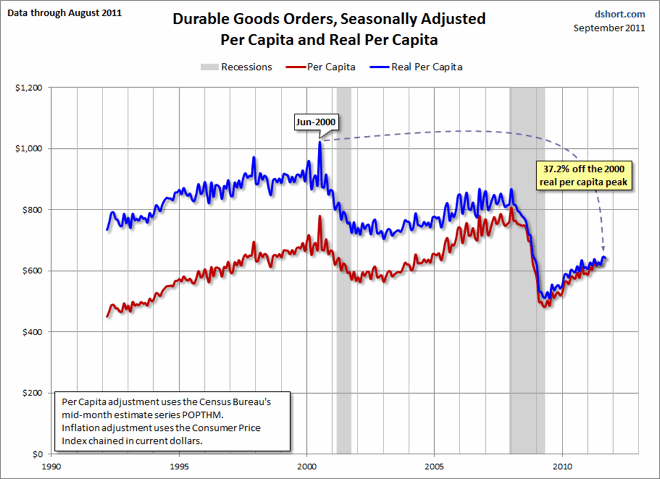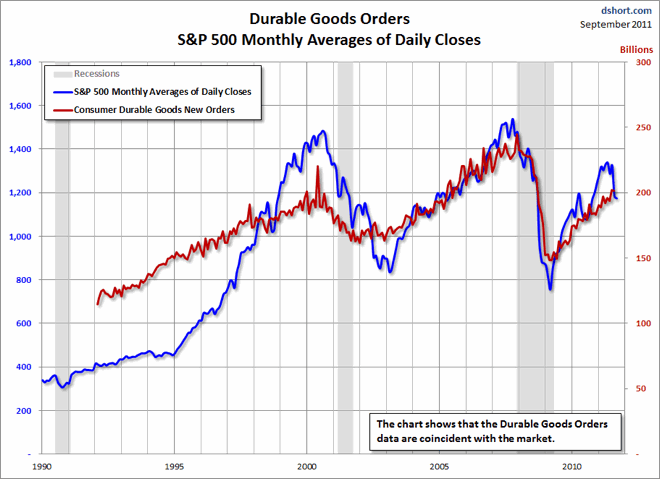Today’s chart is from dshort.com, and provides a clearer insight into the important August durable goods orders data release last night in the US.
Here’s the quote:
New orders for manufactured durable goods in August decreased $0.2 billion or 0.1 percent to $201.8 billion, the U.S. Census Bureau announced today. This decrease, down two of the last three months, followed a 4.1 percent July increase.
Here’s why you need to look at this in context, just like consumer/retail spending in Australia:

Yes, they have increased from a very low base, but are still down some 37% from 2000 highs.
Here’s the nominal durables plotted against the monthly average S&P500 share price:

So it pays to look at the trend, particularly per capita and adjusted for inflation, not nominal or monthly and extend that analysis into the future. I’m sure there are some who did so at the height of 2007 or 2000 and said things like this:
Recall the claims of dribbling fantasists and lunatics that the US is already in or close to a recession, or whatever, and that the world is ending. I’ve long pointed out that this is not the case, that there is simply no evidence for these claims and that we are not even close (although Europe has the potential obviously).
Well, durable goods orders out last night again back my view. Headline orders were down 0.1 per cent in August after a 4.1 per cent gain the month prior (+14 per cent year-on-year) but core orders were up 1.1 per cent after an upwardly revised 0.2 per cent fall (was -0.9 per cent). Core shipments rose 2.8 per cent after a 0.4 per cent rise, which puts annualised growth near 20 per cent – ie. very strong and certainly not recessionary.
And why is this important? Because as we’ve shown previously, the US equity market leads the Australian equity market. There has been no decoupling and you need to always take a macro, long term view of the real world, even though it may be fantastic.